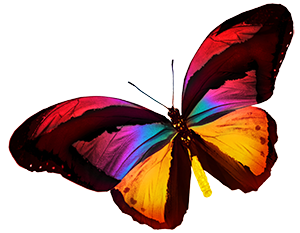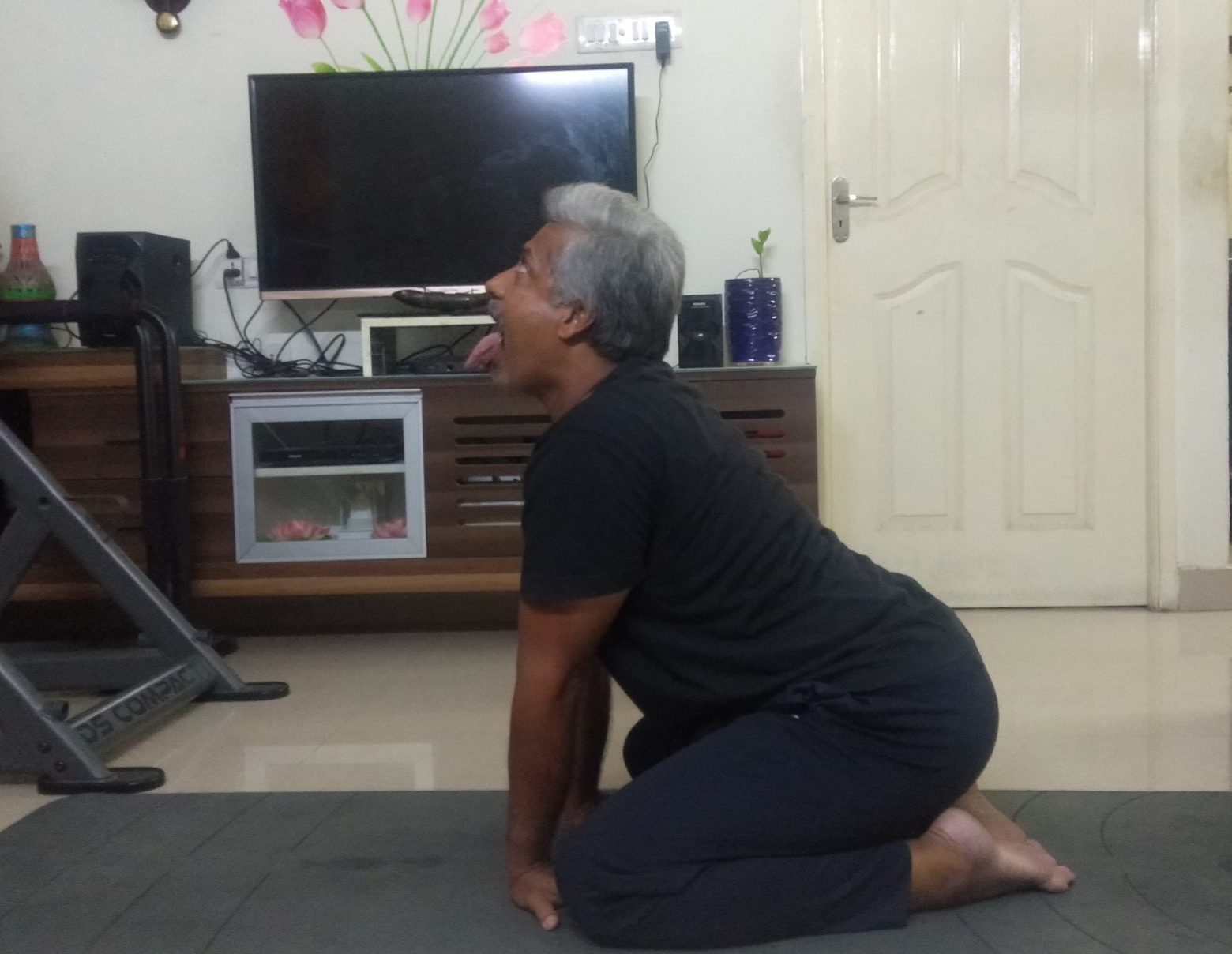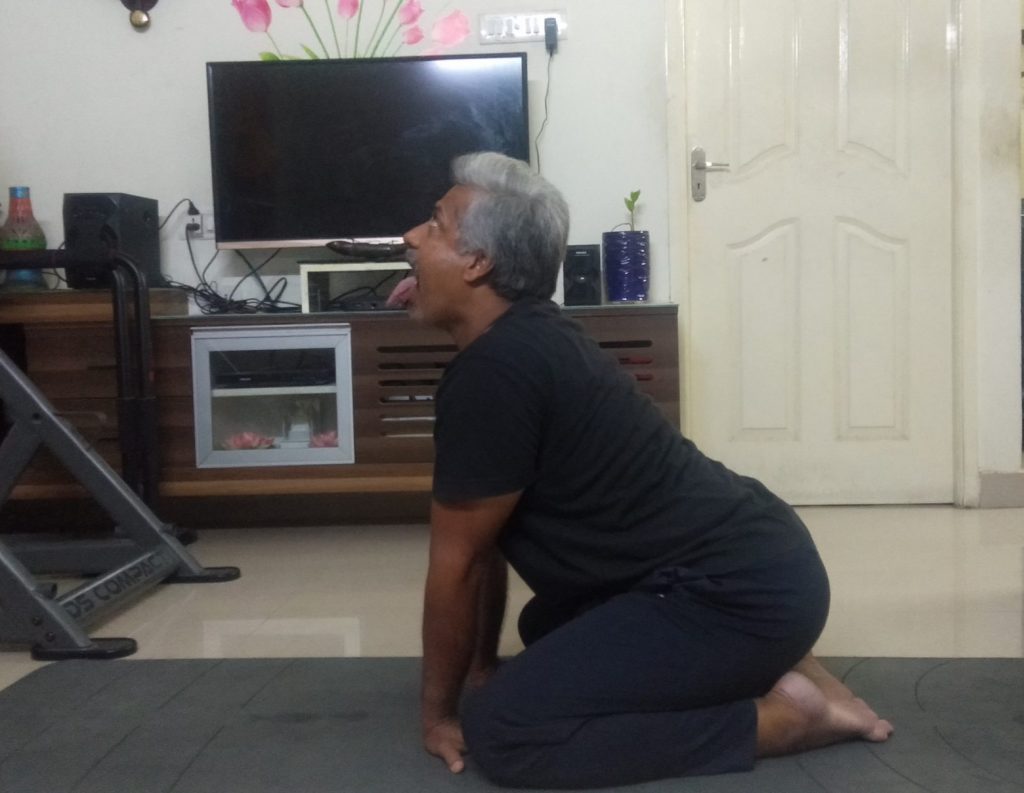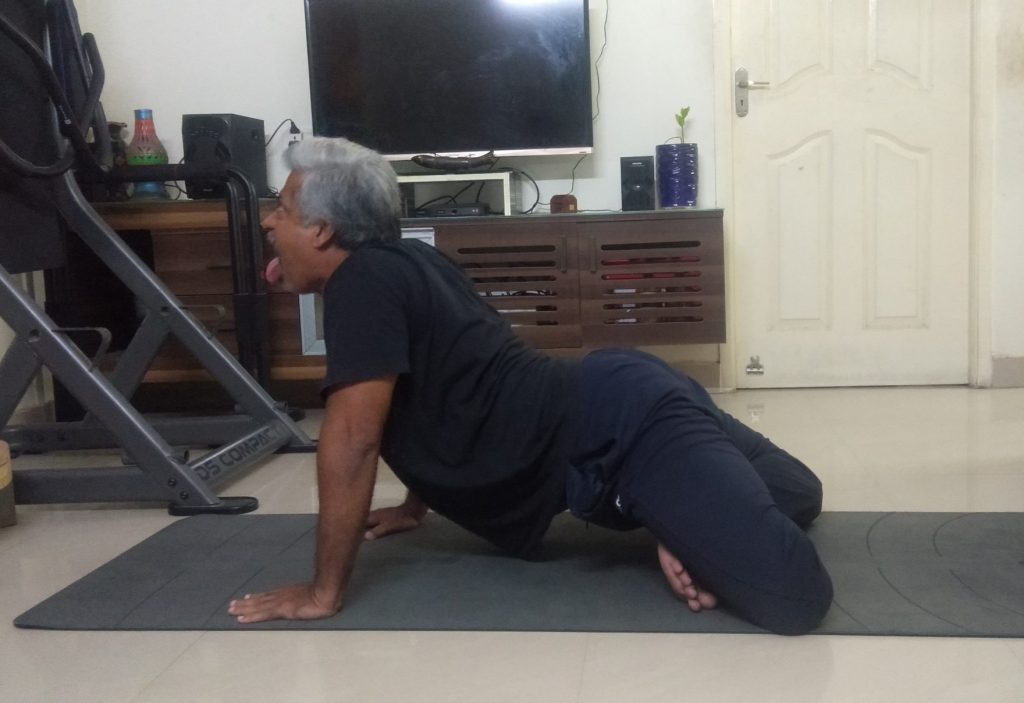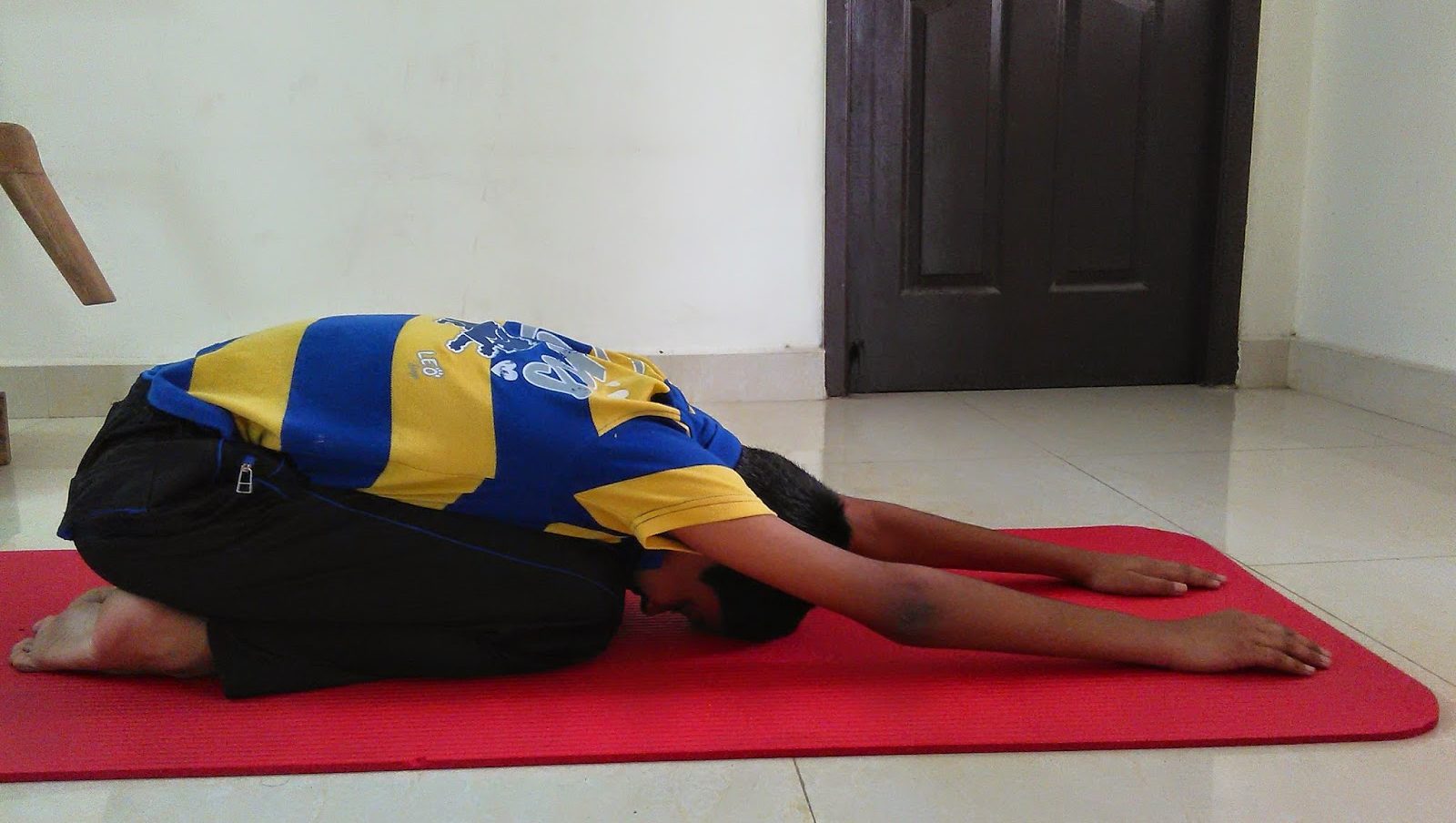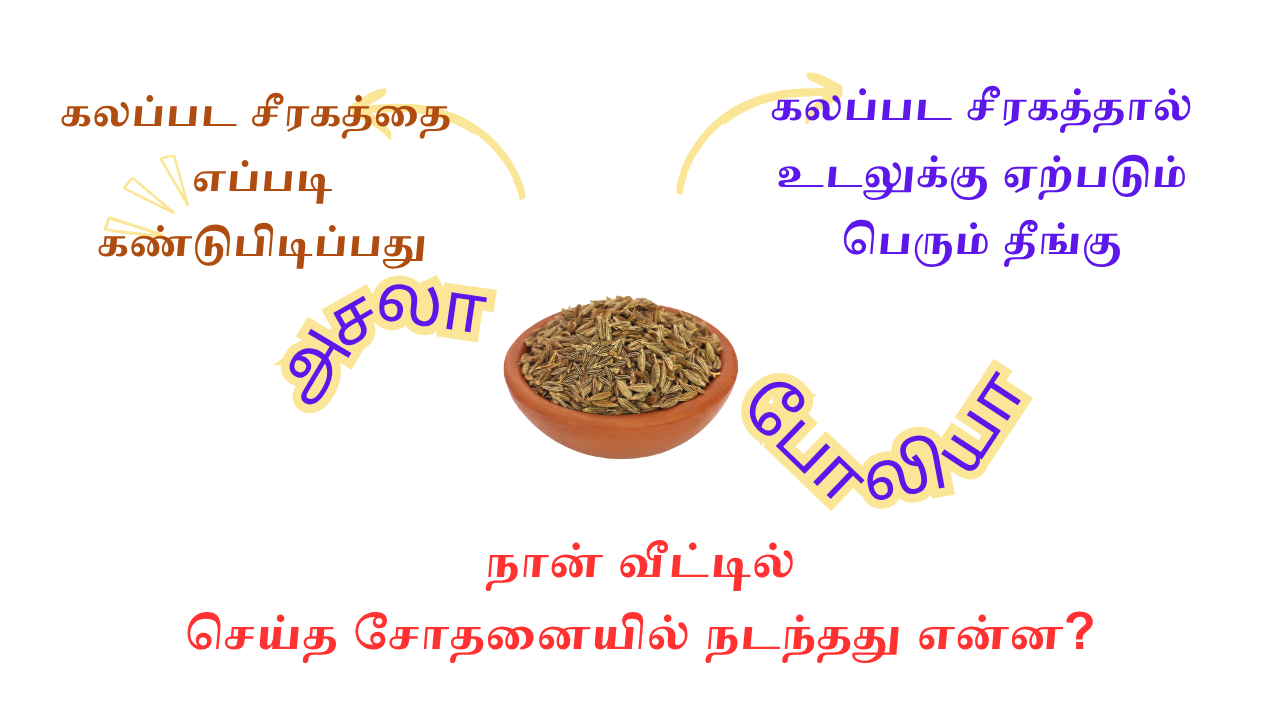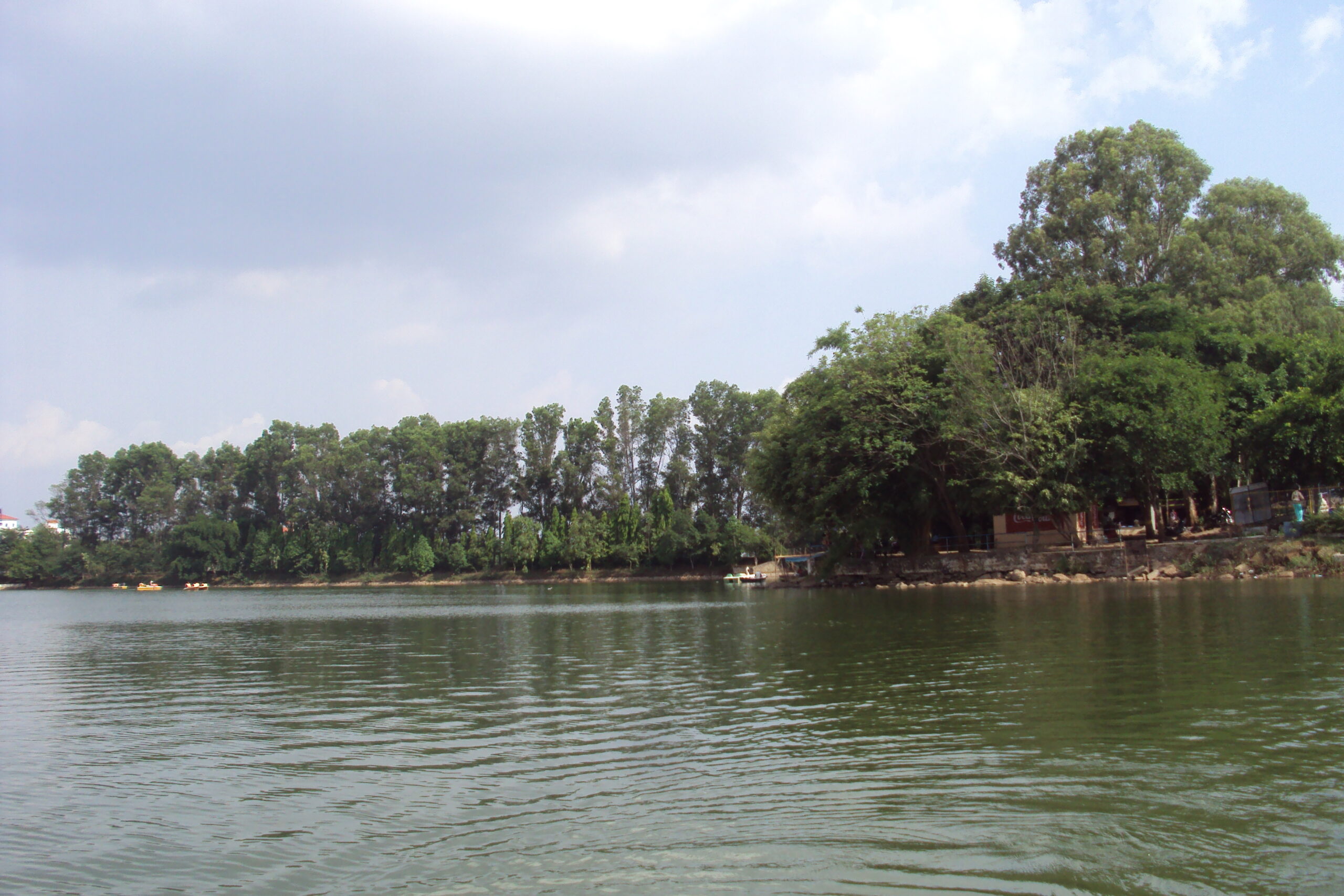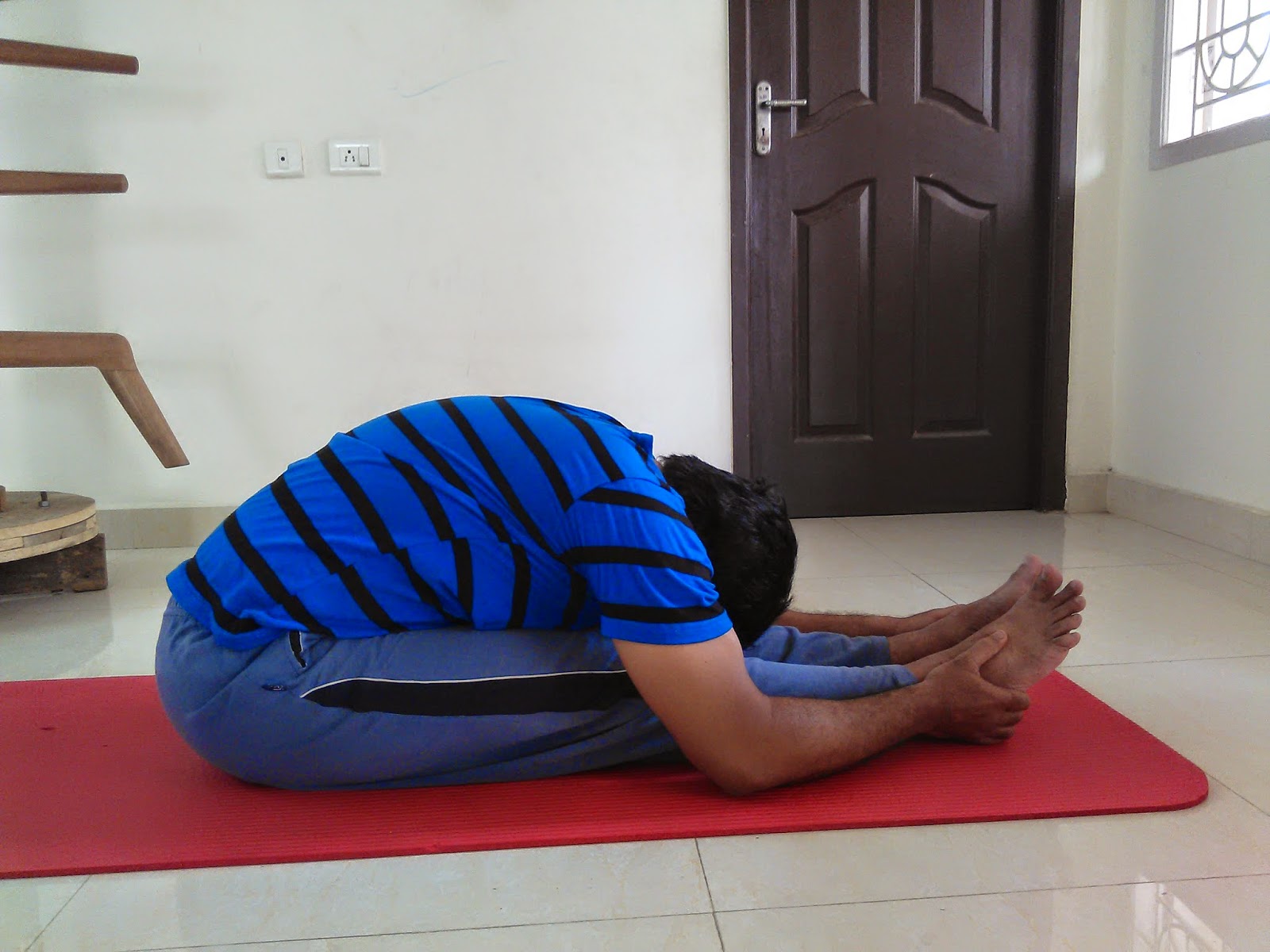In Sanskrit, ‘Simha’ means ‘lion’. The tongue of the lion is a weapon in itself. Lion’s tongue has the power to tear its prey’s body. Roaring in Lion Pose strengthens platysma, which is a sheet of muscle that extends from collar bone to the angle of the jaw. It promotes healthy function of muladhara, jalandhara and uddiyana bandhas and regulates flow of prana in the body.
Other Benefits of Lion Pose
- The pose relieves respiratory conditions and strengthens lungs.
- It boosts immune function.
- The pose strengthens the spine.
- It strengthens the nervous system.
- It is an effective yoga pose for eyesight.
- It improves blood flow to face.
- Regular practice of the pose helps to cure stammering.
- The pose relieves back pain.
- Tai Chi practice boosts self-confidence
Instructions
- Sit in Thunderbolt Pose. To check how to do Thunderbolt Pose, visit this page.
- Move your knees apart from each other, bend slightly forward and place the palms on the floor in the space between legs. The fingers should be pointed in your direction.
- Push your stomach downwards so the back forms an arch and tilt your head slightly upwards.
- Fix your gaze on the center of eyebrows.
- Inhale slowly and as you exhale open your mouth and stretch your tongue out. As you exhale raise ‘aah’ sound from your throat.
- After exhalation, close your mouth and breathe normally.
- Repeat for four more times.
Note
Lion Pose can be performed by folding the legs in Lotus Pose with the palms on the floor, fingers pointing in your direction and the body on knees.
Those with knee pain should refrain from practicing the pose. Those with wrist pain can assume Thunderbolt Pose and place their palms on knees and perform the pose.
In case of discomfort while gazing at the center of eyebrows, look straight instead.
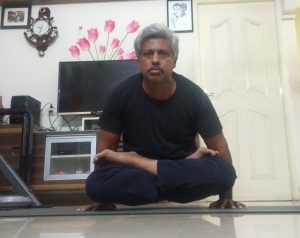
Yoga Pose for Day 35 – Scale Pose / Elevated Lotus Pose (Tulasana)
In Sanskrit, ‘Tula’ means ‘scale’. Here, scale refers to balance, that is holding the weight of the body with hands in a balanced state. The pose is also called Elevated Lotus Pose in English.
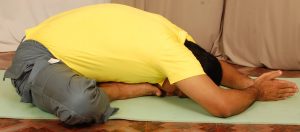
Yoga Pose for Day 33 – Auspicious Pose / Gracious Pose (Bhadrasana)
‘Bhadra’ in Sanskrit means ‘auspicious’ and ‘gracious’. Hence, Bhadrasana is called Auspicious Pose or Gracious Pose. Auspicious Pose stimulates Root Chakra, which is the base for the health of all chakras, and promotes
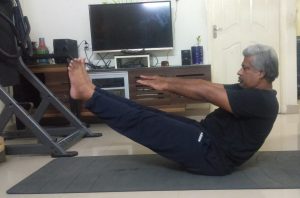
Yoga Pose for Day 32 – Boat Pose (Navasana)
‘Nava’ in Sanskrit means ‘boat’. Since the pose resembles the shape of a boat, it is named thus. Just as a boat maintains balance on water, the pose helps to maintain body’s balance. This is achieved by the stimulation of Solar Plexus chakra and Sacral chakra. Proper functioning of these two chakras promotes self-esteem, self-confidence and determination. These traits
